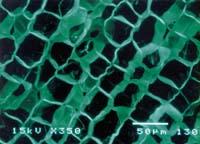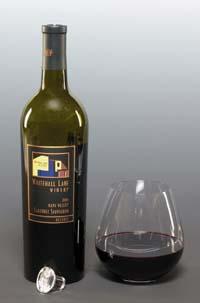Cork and wine in the noble company
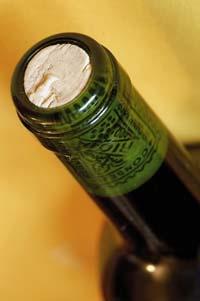
Cork is known for a long time. Since time immemorial it has been used in fishing to make footwear and, how not, to seal containers and bottles. The wedding of wine and cork is very old, proof of this is an amphora of the first century a. C. discovered in Efeso: it was closed with cork and when they opened it they saw that it still had wine.
However, wine bottles have not always been closed with cork. Initially, wooden blocks were used, among others, with waxed or greased grooves. But cork was a much more appropriate material, so the wedding between wine and cork was only a matter of time.
Well behind that wedding there is a remarkable name, as the legend says: Dom Pierre Perignon. The friar Perignon made sparkling wine in Champaigne and used cork to maintain the pressure of the wine gas. And for the center. Since then, champagne and cork have gone hand in hand.
Although initially the cork was carried to close the champagne bottles from Catalonia to France, as demand increased (they began to be used for both champagne and wine), in Andalusia the cork was also collected. Thus, little by little this activity was extended to many Mediterranean countries: Portugal, Italy, Morocco...
Appreciated skin

It is no coincidence that cork meets in the Mediterranean countries. The cork leaves the cork oak ( Quercus suber ) and the cork oak begins especially in this area. Before the growth of cork production, in the forest, cork cork trees that grew among other species were simplified, but over time, cork trees were planted and extensive plots were formed for cork production.
Portugal is currently the largest producer of cork, with 730.000 hectares of cork oak. In Spain there are planted 500,000 hectares and in Algeria there are 410,000 hectares. From the economic point of view, they constitute the principal source of income of the peoples with little resources to survive.
In fact, cork oak trees are rich ecosystems that host numerous plant and animal species, including some endangered. On the other hand, the cork is exploited in a traditional way; the cork is taken care of well to continue giving cork year after year. Therefore, the sustainability of the activity and the ecosystem is guaranteed.
If taken care of well, cork oak can be exploited for a century and a half. For the first time the skin is removed when the cork oak is about 25 years old. The cork oak should have a certain dimension, with a minimum perimeter of 63 cm. At 1.30 m. height, but normally the cork is removed at 80 cm.
This first cork is not suitable for closing the bottles, since it is very irregular, so it is used to cover the floor or as mainly insulating.
The cork is removed after nine years (twelve years are necessary in the area of Catalonia). It is more regular than the previous one, but it is still not suitable for the cap. The third cork that will be used for the manufacture of the plugs is the third and successive. In fact, every nine years the cork of the cork will be removed, with a total of between fifteen and sixteen occasions.

The cork is manually removed with special tools and a very special technique. This results in the smallest possible damage to cork oak. The corks collected in the forest are placed in heaps, either in the forest or outside the factory. The cork will stabilize for six months. Then she gets into the factory production chain: boil in water, iron, cut, rectify, pass quality tests… and at the end of the bottle!
The leftover cork remains of this process are reused, forming agglomerates and plugs, among others. With these other cork blocks are closed the wines of the year, like the txakoli.
With the excuse of the taste of cork
In the manufacture of cork, manufacturers comply with very strict measures. Because they have a code. This code was drafted in 1996 and is continually renewed. It is a code of good practices whose aim is to achieve the maximum quality of cork.
The associations of corcheros have a lot of power and it is not surprising that you do not want to lose that power. In recent years, there have been many competitors, companies that manufacture synthetic plugs and have invested a lot of money in research to keep them in attack. Most research is carried out with the aim of solving a problem: the taste of cork.
The taste of cork deteriorates every year thousands of bottles of wine (there is no specific data, but to have a hint, studies of one and the other type indicate that between 0.5% and 7% of the world production is damaged). In this sense, the manufacturers of synthetic blocks claim that the synthetic is safer than the natural cork and there are no lack of reasons.
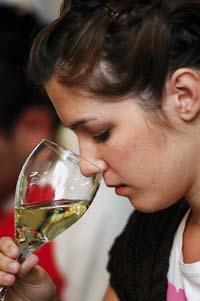
However, it is necessary to be careful and not to put to the cork all the guilt of the flavor of the cork. While it is true that behind the flavor of cork is cork in most cases, it can also have cork flavor with other plugs, flavor that has also been found in wines without bottling. And it is that, although it is called cork flavor, it is actually a mold flavor, provoked by some fungi.
TCA, the nightmare of winemakers
The concern for mold flavor is not slow and long ago they chase the culprit. After eleven studies, experts agree that the molecules that completely destroy the taste of wine are organochlorine, mainly trichloroanisol (TCA) and tetracloroanisol (TeCA).
These molecules are produced by microorganisms. Therefore, microorganisms are responsible for mold flavor, mainly fungi of the genera Aspergillus and Penicillium. These microorganisms could be in the cork, but sometimes the winery can be contaminated. However, microorganisms are not fully responsible. In fact, organochlorine compounds do not come from nowhere, they need a chlorine source that is a pesticide, which is what is most believed to be.
Triclorofenol (TCF) is a pesticide that has long been banned in Europe for suspicion of cancer. This pesticide is hardly degradable, so although it is not currently used, the spread in its day is still practically in all ecosystems. If the TCF reaches the cork or the wooden structures of the winery, the microorganisms transform it and convert it into TCA. If it reaches the wine TCA acquires mold flavor.
Organochlorine compounds, including TCA, are volatile so they are easily recognizable with smell. Consequently, a very small amount is sufficient to overcome the rest of pleasant odors of the wine and destroy the drink.
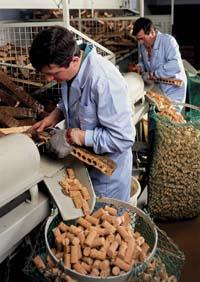
Therefore, for the wine to have no mold flavor, you have to take care of the whole process. According to the manufacturers of cork, the necessary measures have been taken: if you follow the code of good practices, cork does not give mold flavor to the wine.
However, synthetic plugs have a great opportunity to get a greater part of the market. In fact, synthetic wines do not give this kind of problems, and more and more wineries use synthetic plugs with young wines, such as whites. In America, for example, plastic plugs have been widely extended and in Australia metal plugs with yarn.
In Europe, for the moment, synthetic plugs are not very successful, tradition has a lot of weight. But synthetic plugs are pushing. Yes, they have to overcome a great barrier to disassemble the cork: the limit of the environment. They are not biodegradable. The cork is natural. In addition, to close the cured wines has nothing in common, the wine of closed bottle with cork continues to evolve. So it seems that the good wine will continue in the company of cork.
